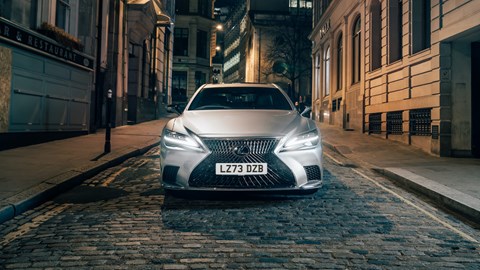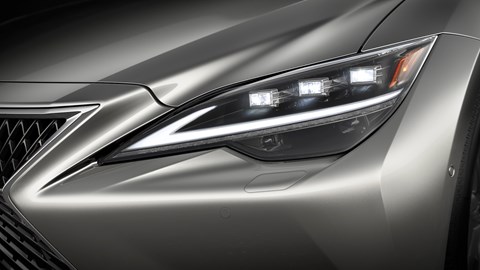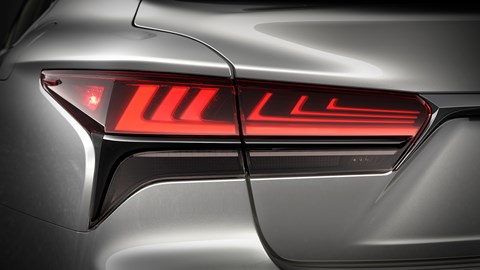► Lexus LS goes off sale in the UK
► What it represented
► And what it means for the saloon market
To understand Lexus, start with Sony. Only people old enough to remember The Beatles’ first LP will recall that ‘Made in Japan’ was once a stigma, not a guarantee of quality and refinement.
Sony changed that. Its founder, Akio Morita, had vision and guile. Just when Western Electric declared there were no commercial uses for the transistor its labs had invented, Morita found that, indeed, there were. Rather profitable ones, in fact.

Additionally, he had the wit to know that Tokyo Tsushin Kogyo was difficult for Western tongues and ears, so he invented the name Sony, happily suggesting both ‘sound’ and an affectionate name for a male child. And he eradicated Japan’s reputation for shoddy products by committing to ingenious, continuously innovative technology and sophisticated design which set a world standard. Refusing to discount, he said: ‘We are selling diamonds.’
Never mind that it has now more or less abandoned hardware to concentrate on cinema and gaming, ‘Sony’ remains an eponym for premium-priced excellence. This is where Toyota wanted to be.

Lexus came into existence in 1989, soon after the Toyota Corolla had become the best-selling car of all time. The ambition was now to build not just the world’s most popular car, but the world’s best car. But, unlike VW, its predecessor in that popularity role, the Corolla did not represent any form of ambition in technology, design or driving experience. It was a blameless, therefore emphatically dull, little car whose chief attribute was reliability.
Cars perform bravura tricks in the theatre of our imaginations, but very few people let their imaginations wander into concepts of service intervals and MTBF (mean time between failures).
Desire is the thing. Toyota wanted to engineer desire with a glamorous large car. No one wanted a big Corolla, so Toyota invented a premium brand. The name Lexus simultaneously suggests the concepts of the ‘regal’ and ‘luxury’ which, I suppose it’s fair to say, is what many large-car buyers want.
The original Lexus LS had a shape explicitly inspired by the W126 Mercedes-Benz S-Class, especially in matters of proportion and the curves around the C-pillar and the nose profile. Originality in aesthetics was not in the plan, although the LS was a far more advanced proposition than Toyota’s existing large car, the Century. This is the one you still see in Tokyo with lace antimacassars on the back seat and a driver with white gloves. Its appearance resembled a full-size American car of the early ’60s.

But the Rekasasu, as it was known in Japan, could make claims of its own. The goal of serenity had been a target for the engineers. Perhaps they had a Zen tea-room in mind. Unusual quality too. It was claimed that the electrical connectors were gold because that metal’s conductivity was specially high.
There was more from Toyota’s busy Department of Myth-Making. People said there was a Lexus test-track somewhere in Japan where the surface rose by exactly 1cm in the course of a kilometre to replicate the curvature of the earth. Precision was king, even if that king was not fully dressed.
I drove an early LS and was astonished to the point of blinking by the powertrain. Noise and vibration were almost imperceptible. You could hardly tell if the engine was running. Pressing the accelerator produced a nearly silent rush of well-mannered energy as if a million synchronised angels were giving you a shove in the back along an endless channel of greased roller-bearings.
And it wafted along as though those same angels had commandeered a leather-upholstered waterbed. Of course, switches and secondary controls were superlative with no lost motion and disciplined graphics. The stereo was by Nakamichi, the caviar of audio.
And now the LS has been withdrawn from sale in the UK, leaving Lexus with a range dominated by five SUVs, as humdrum in their way as the Corolla used to be. Fact is, they were always Toyotas. Another fact is: only three Lexus LSs were sold in the UK in 2024.

What we are seeing here is not just a failed experiment by Toyota, but a larger story of the endgame of the three-volume format. The story of Lexus is a threnody for the saloon, a car type belonging to the age of cufflinks. Individual customers for large saloons no longer exist in significant numbers: they are bought mostly by chauffeur businesses.
Lexus has a brand problem too. The thing with brands is that they cannot be created just like that. You have to wait. Brands are a promise. They are a bit like religion since they require belief. Nurture your product for long enough and it will eventually acquire the positive associations and pleasing expectations that define ‘brand values’.
The LS was not nurtured and then found itself on the wrong side of history. In this sense, Lexus has failed. Once it was selling diamonds, but no longer. Sony is out of the game it started, so too is Lexus.